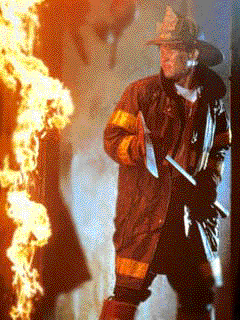HOW DO FIRE-SHIELD PROTECTANT CHEMICALS AND PRODUCTS WORK? UNIVERSAL FIRE-SHIELD PROTECTANT products automatically react with fire or heat to convert combustible gases and tars to noncombustible carbon char, nitrogen, and carbon dioxide. This chemical reaction substantially increases carbon char and creates an intumescing action, causing the surface to bubble-up and thereby keeps the heat from regenerating. The nitrogen produced as a by-product of the bubbling-up action displaces the oxygen, thus smothering the fire. The ionic balance of chemical separates the fuel from the source of ignition. The properties of the chemicals give "double protection." FIRE-SHIELD PROTECTANT treated materials produce less smoke. In many cases, smoke generation has been reduced by as much as 80%, which is very important since smoke inhalation causes more deaths than fire.
WHAT TYPE OF MATERIALS CAN BE PROTECTED?
* BUILDING MATERIALS Raw Lumber * WOOD Interior & Exterior
* MATTRESSES, Covers and Ticking * PAPER, Products
* SLEEPING BAGS * CLOTHING
* CARPETS, DRAPERIES * SHEETROCK, Paper cover
* FABRICS, Cotton, Blends, Wool * TEXTILES and many OTHERS.
WHAT ARE THE QUALITY FEATURES OF FIRE-SHIELD PROTECTANT CHEMICALS? UNIVERSAL FIRE-SHIELD PROTECTANT CHEMICALS are low cost, yet superior fire inhibitants which meet or exceed existing and current federal, state and local fire safety code requirements as well as industry standards. FIRE-SHIELD PROTECTIVE chemicals are superior to alternative flame retardant products currently on the market. ARE FIRE-SHIELD PROTECTANT CHEMICALS SAFE AND EASY TO USE? FIRE-SHIELD PROTECTANT penetrant chemicals are premixed and ready to apply and it requires little material preparation. The products are in a liquid base environmentally safe and will dry down colorless, odorless and nontoxic, asbestos free, and all are environmentally safe. Although FIRE-KOTE a coating penetrant is slightly toxic during the application phase only. It also can be used in habitable areas where there is only a sleight restriction on use around people, plants, or animals when being applied.

